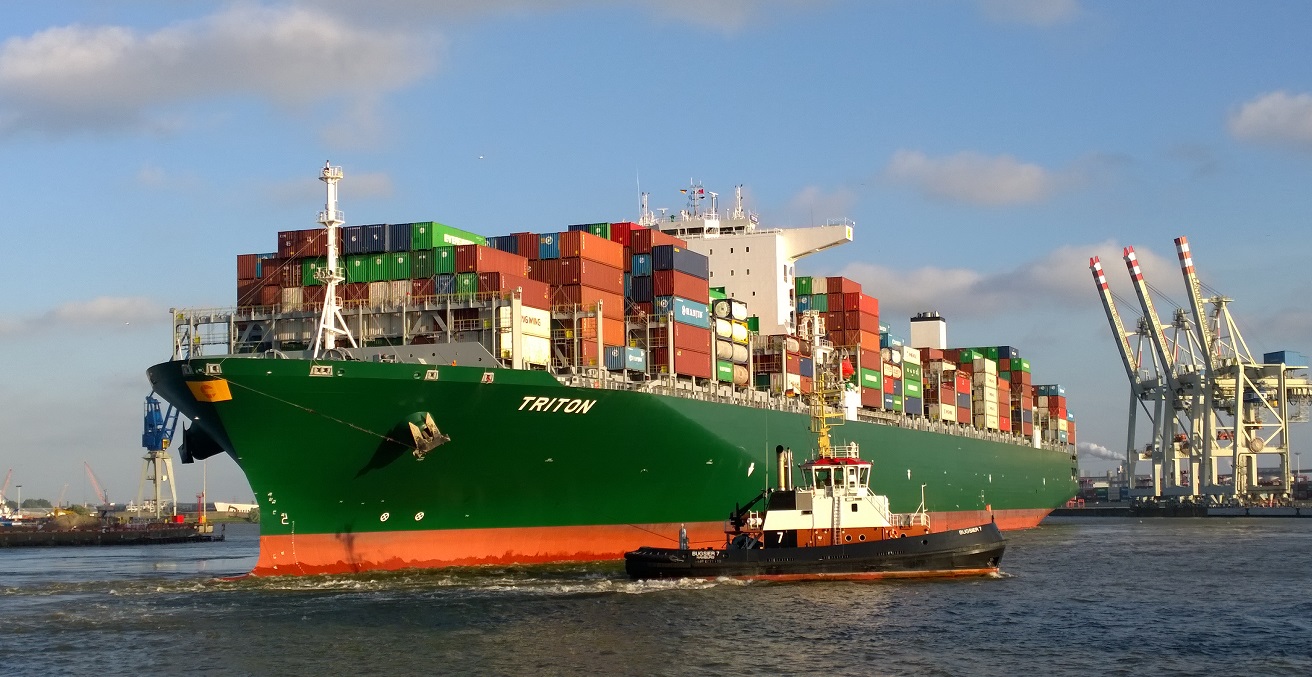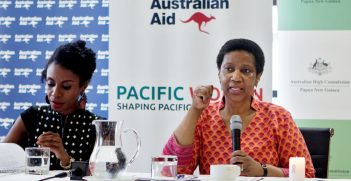Security Trumps Trade in White Paper

In a dynamic Indo-Pacific region, what was once purely trade policy is now also security policy. But with Australia looking to continue profiting from Asia’s economic surge while keeping its security ties to the US, can it have its cake and eat it too?
The new Foreign Policy White Paper sets to change the map of Australia’s trade and investment diplomacy with momentous implications for its future economic foothold in Asia.
As expected, the rather scant trade-focused sections in the white paper offer a perfunctory defence of economic globalisation as the core pillar of Australian national interest, stating that market “openness makes sense for Australia and for global growth and prosperity”.
More poignant than the usual call to arms against protectionism is the geographical language used throughout the white paper. The numerous references (74 in total) and whole chapter dedicated to the Indo-Pacific region underscore Australia’s strategic move from a multipolar Asia-Pacific region to the US-led Indo-Pacific rim. In fact, Donald Trump’s strategy to contain China’s rise as a global superpower shows that the securitisation of Indo-Pacific trade and investment is poised to offset the US geopolitical retreat from the Asian core. In other words, the new White Paper marks a strategic subordination of Australia’s multilateral trade agenda in Asia, which was designed to sustain economic growth, to global security concerns aimed at preserving the US-led liberal order.
It is quite interesting to note that the 2003 white paper did not mention the ‘Indo-Pacific’ once and instead widely used the term ‘Asia-Pacific’ (26 times), which virtually disappears in the 2017 document (down to only four references). Besides, the word ‘trade’ drops from 365 mentions in the body of the 2003 version to only 182 within the 2017 paper, which prominently displays ‘security’ in the subtitle and discards ‘trade’ from the main title.
The embrace of this rehashed Indo-Pacific terminology (which originates from Nicholas Spykman’s rimland concept during World War II) shows that Australia is an early adopter of the US administration’s plan to embed trade tactics in security strategies that would form a liberal-democratic cordon around China’s geopolitical advancement in the Eurasian landmass.
Indeed, Donald Trump’s recent resolve to revive the Indo-Pacific ‘Quad’ security forum with Japan, India and Australia appears to exceed the original goal of maritime security cooperation, and to include shared economic diplomacy efforts to keep trans-Pacific trading routes beyond Chinese influence as well as to coordinate regional infrastructure financing schemes which are distinct from what is offered by China.
Significantly, in the first page of the overview the white paper openly acknowledges that “[t]oday, China is challenging America’s position”, a matter-of-fact phrase that would have outraged foreign policy pundits back in 2003. For Australia, the subtext of this challenge is that the US-led Indo-Pacific geopolitical paradigm calls into question the potential costs and benefits of Australia’s strategic choice to remain at America’s side despite (or perhaps because of) the unprecedented dynamics instigated by Donald Trump’s presidency. On one side this direction could undermine Australia’s trade and investment relations with China and its Asian partners; on the other hand it could firewall Australia’s security interest from the perils of the US strategic retreat from the Asian core and into the Indo-Pacific rim.
On a purely economic basis and assuming that Chinese trade routes will remain geopolitically viable over the long term, Australia is well placed to fill the gaps left by a wrecked US–China trade relationship, and thus well placed to reap substantial commercial gains from Sino-American trade diversions.
Nevertheless, the Trump factor also comes into play even though the new white paper gracefully glosses over it. For one thing, Australia’s economic partnership with the US is relatively safe from sudden policy upsets despite the fact that with Trump’s administration, US trade policy has undergone a Copernican revolution. In fact, as the US Trade Representative (USTR) office has effectively been downgraded and subordinated to the Department of Commerce, trade is now instrumental to industrial policy, rather than the other way around. Furthermore, Trump’s haphazard strategic outlook has coupled with Xi Jinping’s ambitious masterplan for China’s world trade game to further blur the boundaries between global trade and security policies.
In this uncertain context and despite the higher volume of Asian trade, the white paper signals that the definition of Australia’s geo-economic interests will depend more on its commercial relationship with the US than that with China, thus shifting Australia’s trade policy barycentre from the Pacific to the Indian Ocean. Besides, commercial diversification is rapidly becoming a policy imperative for the Australian economy. A recent IMF visit report pointed out that “Australia is also particularly exposed to downside risk from China through its trade links in commodities and services”.
What then, are the implications of the new US trade policy for Australia’s economic diplomacy? At first glance, Australia appears to be off the hook when it comes to Trump’s hardline approach as it already has a bilateral trade agreement and maintains a USD$28 billion (AUD$37 billion) trade deficit with the US. According to the data from the USTR’s 2016 Annual Report on the Trade Agreements Program, since the Australia–United States Free Trade Agreement (AUSFTA) entered into force in 2005, two-way goods trade has increased 47.7 per cent, from USD$21.5 billion in 2004 to USD$31.8 billion in 2016. Two-way services trade nearly tripled in the same period, from USD$10.4 billion in 2004 to USD$29.3 billion in 2015. Overall, the latest data shows that the US had a USD$12.7 billion goods trade surplus with Australia in 2016 and a USD$15.3 billion services trade surplus in 2015.
To put it in context, the 2016 balance of US trade in goods with Australia represents the fifth largest US surplus by country, after Hong Kong, the Netherlands, the UAE and Belgium. Comparatively with other middle power allies, the US has a trade deficit of nearly USD$12 billion with Canada, around USD$25 billion with Malaysia and South Korea, and nearly USD$70 billion with Japan.
Significantly, the 2016 annual report appears neutral in regards to the meeting of the United States–Australia FTA Joint Committee that reviewed AUSFTA’s implementation in May 2016 (albeit under the Obama administration). The report was concluded in March 2017, thus providing the Trump administration with the chance to form its own assessment. In fact, the report already highlights Trump’s landmark decision to formally withdraw from the Trans-Pacific Partnership Agreement. Given Trump’s decision-making style and shaky agenda priorities, silence is loud and a lack of criticism thus indicates that his administration isn’t likely to turn the table on the bilateral trade and investment relationship with Australia as it currently stands.
But while our bilateral trade relationship with the US is in positive territory, as it’s implemented over the next three (or possibly, seven) years, Trump’s hardline approach to reverse the US account deficit is poised to deeply disrupt global value chains at both the manufacturing and monetary levels. Needless to say, a close US economic and security partner like Australia requires steady hands—and a good dose of luck—to escape the firing line of unwarranted geopolitical troubles that may be triggered by Trump’s trade revolution.
The Department of Foreign Affairs and Trade seems well aware of this new state of play, as the White Paper indeed highlights in the overview that “changes in the balance of global power and geopolitical competition are testing the international order”, and in chapter three states that “China [is] now a major geopolitical player with the capacity to influence virtually all of Australia’s national interests”.
Dr Giovanni Di Lieto lectures international trade law in the Bachelor of International Business program at Monash University. He is a counsellor with AIIA Victoria.
This article is published under a Creative Commons Licence and may be republished with attribution.





